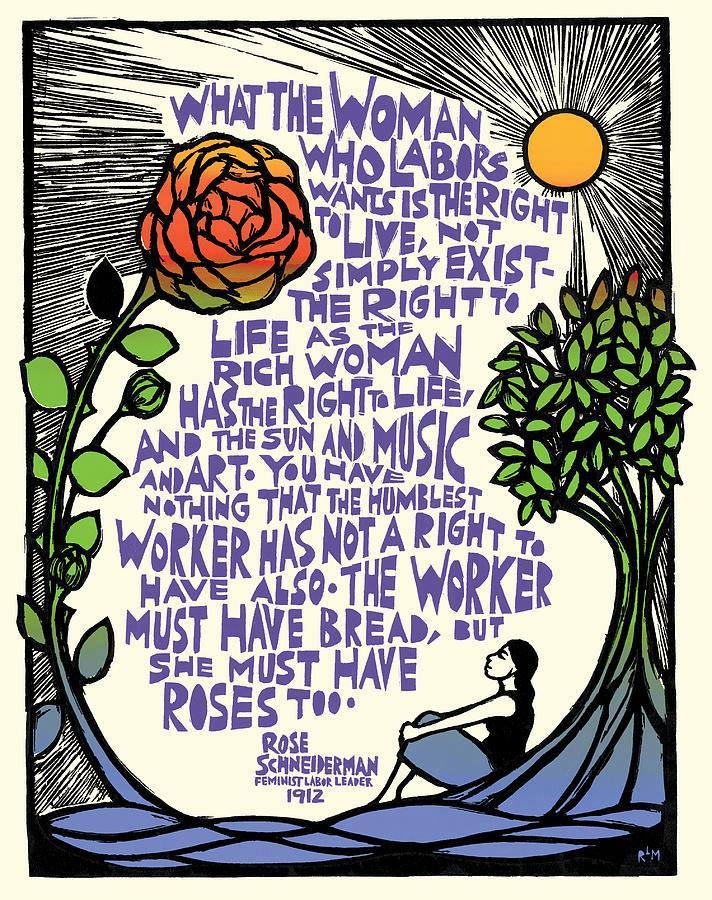Bread and Roses

Bread and Roses
muzyka: Mimi Fariña, 1974
As [C]we come marching, marching in the beauty [F]of the [G]day
[C]A million darkened kitchens, a [D]thousand mill lofts [G]gray
Are [C]touched with all the radiance that a [F]sudden sun discl[G]oses
For the [C]people hear us [Am]singing bread and [F]roses, bread and [G]rooo[C]ooses
As we come marching, marching we battle too for men
For they are women’s children and we mother them again
Our days shall not be sweated from birth until life closes
Hearts starve as well as bodies, give us bread but give us rooooooses
As we come marching, marching, un-numbered women dead
Go crying through our singing their ancient call for bread.
Small art and love and beauty their trudging spirits knew.
Yes, it is bread we fight for—but we fight for roses, too-ooooo!
As we go marching, marching we bring the greater days
For the rising of the women means the rising of the race
No more the drudge and idler, ten that toil where one reposes
But the sharing of life’s glories: bread and roses! bread and roooooooooses!
As we come marching, marching, we bring you hope at last
The rising of the women means the rising of the class
No more the drudge and idler, ten that toil where one reposes
But the sharing of life’s glories: bread and roses! bread and roooooooooses!